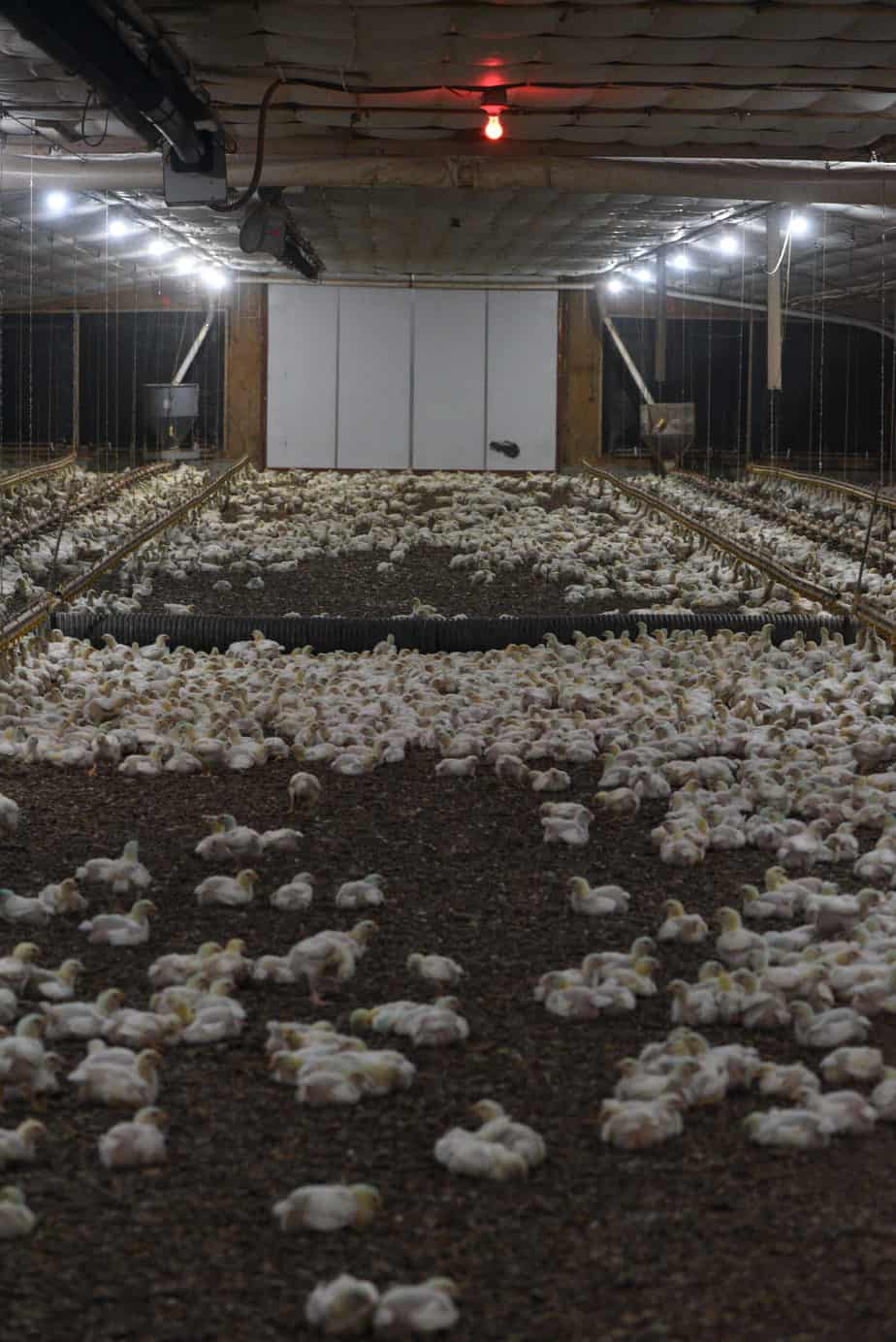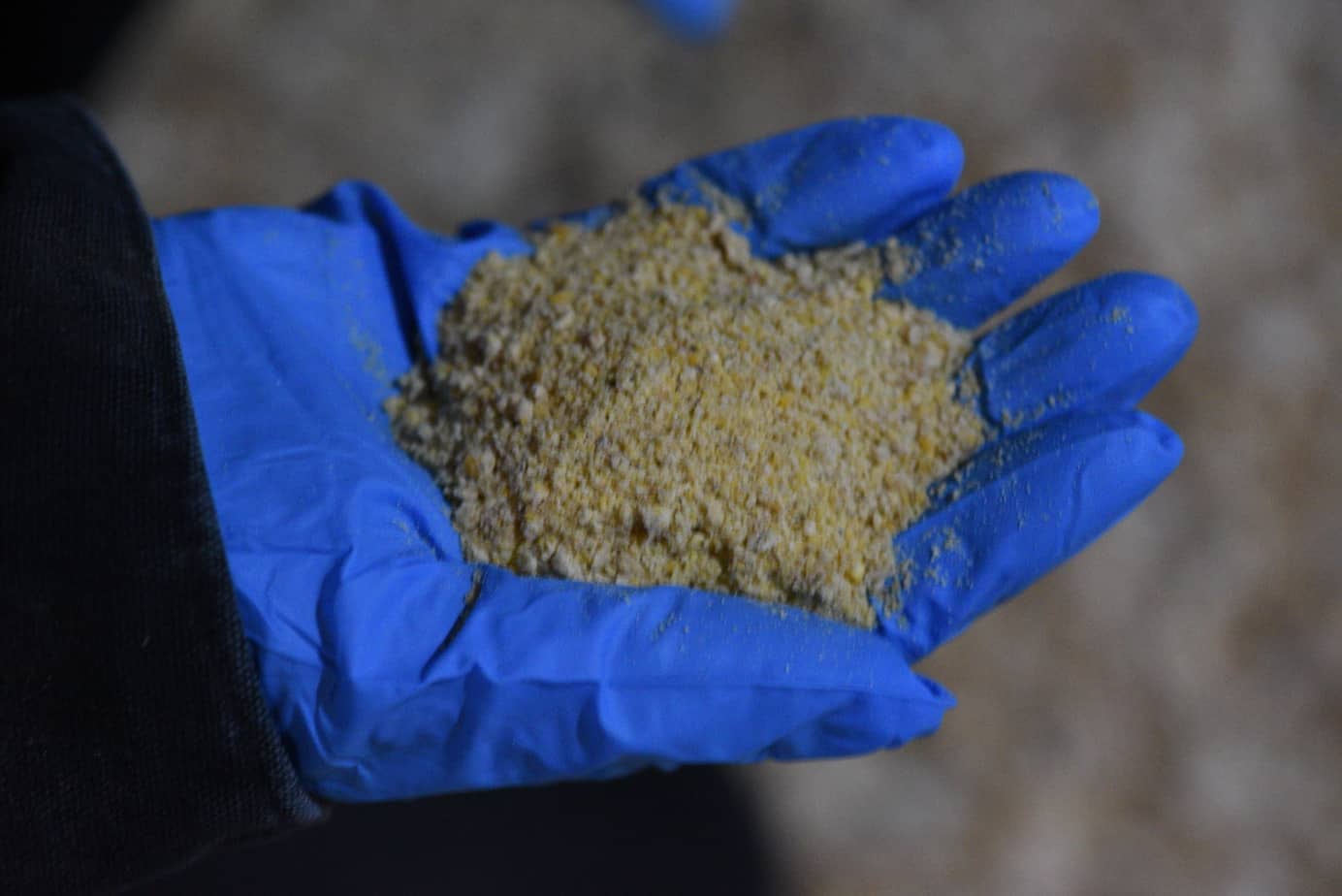This is a sponsored conversation on behalf of the National Chicken Council. All thoughts and opinions are my own.
Earlier this month, I joined the National Chicken Council, and several food and nutrition bloggers from around the nation to tour a broiler chicken (chicken raised for meat) farm in Maryland. Yes. Maryland. A place I connected more with crabs than poultry, and also one of the top ten producers of poultry in the nation; specifically the area known as Delmarva (Delaware/Maryland/Virginia.)
From what I witnessed, these farmers are extremely proud of their profession and want to make sure that consumers are factually informed so that they can make purchasing decisions - based on science and facts, and not only emotions. As you've learned on my blog, I talk a LOT about how food can be emotional and political for a lot of people, and the visit to Jenny Rhodes chicken farm let me know that I didn't know the half of it. Jenny raises chickens for a local chicken company, Allen Harim, and was our host for the afternoon.
I'm going to share the top 5 things you didn't know about chicken farming, and then tell you why farm tours like these are so important for the consumer to see.
First I must say that it was extremely important to the National Chicken Council that we share honest photographic evidence with you all, and not just photos that they provided. As someone who has experience with keeping chickens MUCH larger than what was being raised, I completely understand the need for this. It's our responsibility to share a story as it is, and not try to create a narrative based on our emotions. So, here we go.
ALL Chickens Have Hormones but NONE Have Added Hormones
Confused? Let's put it this way. You have hormones. Your teenager has RAGING hormones. The potato that you just enjoyed for lunch has hormones. Chickens have hormones, but it's illegal, and has been for over half a century for hormones to be added to any chickens raised in the United States. It's the LAW. What does this mean for you all? All those "no hormones added" labels on chicken packages in your local grocery store are meant to play on the emotional side of your purchasing habits. We don't want food that's been tampered with in a sense, and because we're not on the farm, we tend to look at language as is, instead of digging deeper for factual data. Once again, NO CHICKENS ARE GIVEN ADDED HORMONES IN THE UNITED STATES. Farmers could lose their farms and their income.
Chicken Houses (Barns) Are Roomy and Comfortable
We were visiting Jenny's farm on a brisk 47 degree day. The inside of the chicken barn was warm and comfortable for me. Given that I've seen chickens deal with below zero weather, and above 95 degree weather, I know that they can deal with varying temperatures like champs, I'm from Chicago remember. While I haven't had chickens since January of this year, thanks to a dog that was let loose by an owner, I do know that chickens are quite hardy. In the case of the farm that I visited, this wasn't a concern. Ample ventilation, and heaters allowed for the temperature to be comfortable, and the circulation of air to be efficient. None of the chickens were on top of each other, even though the barn could hold 20,000 chickens. On the day we visited, there were a little over 18,000 chickens in the one barn, and there was far more room for the chickens to explore than I expected.
One thing that the vast majority of people don't know is how chickens behave when they are around each other. When making the decision to add chickens to our community garden, one of the things that ALL farmers told me was that we had to have more than two chickens because chickens are social birds. They don't care if you have a cubby for every single one of them, if they are egg layers, they are all going to lay eggs in ONE cubby. It's just how they are. They cuddle up for warmth, and they stay together while walking around the garden because they do. I assume because there is strength in numbers, and it's a way to at least deter predators in general. Of course, these chicks have nothing to worry about, since they are in a barn, but it's ingrained, so they move together.
Feed Changes With the Chickens Age
When chicks are just born, they can't process adult feed properly. Kind of like how babies can't process food the way adults can. So feed is specifically tailored for the chicks and fed to them until they grow to a certain age, and then the feed is changed again. This is to make sure that proper nutrients are being given at the right stage.
Chicken Houses are Equipped for Efficiency
It was nice to see a setup in the barn that made sure that food, water, and electrical waste were kept to a minimum. There was a large computer by the door that sends alerts to Jenny if the power goes out, or the temperature fluctuates in a way that is detrimental to the chickens. The feed and water are also set up in such a way, that there is limited food waste. Enrichment areas are also included in some barns, like Jenny's, so chickens aren't just sitting around without any type of activity. Those areas are also safe spaces for chickens to go in case they are being pecked by any of the other chickens in the flock.
Flock Health & Safety Is Important
Before entering the chicken barns, we had to dress in protective coveralls, hair covers, and shoe covers. The farmers and general workers have boots that they ONLY wear in the barns, so they were okay to go in without the plastic covers. This was to protect the chickens (not us!) and prevent the spread of disease - and even I had to make sure to tell Jenny that I haven't had chickens on my homestead since January, in order to attend the trip. Losing an entire flock not only results in the loss of hard work, but the loss of money too. Lots of time and money goes into raising and feeding these chickens, and getting them to grocery stores for us to buy.
The chicken farm tour was educational, and inspiring. Jenny Rhodes is a farmer running a business, and she's doing it with the help of her son. She is extremely proud of her job, and that was evident the entire day that she was leading us on the tour. Coming from generations of farmers, she stated that farming was in her blood. She's happiest when she's out farming, knowing that she's not only taking care of her family, but providing for others as well.
I look forward to exploring more about farms and different ways that we provide food for our families, and to continue to share that information with you all.










ShaBree
Monday 15th of January 2018
This was a very informative post. For sure the “no hormones added” labels on chicken packages in my local grocery store played with my emotions. Lol. Thanks for sharing!
Nicole's Lifestyle Lounge
Wednesday 10th of January 2018
I never realized there was a National Chicken Council. This reminded me of when I was back home in Jamaica and my grandfather would raise chickens.
Tiffany Haywood
Wednesday 10th of January 2018
I knew absolutely nothing so this was such an interesting read for me. There is so much I still need to learn about our food industry and how it works.
Courtney CJ
Wednesday 10th of January 2018
I would have been so out of my element, lol! I'm such a city brat and realize I need to get more familiar with nature, outdoors, and all of that. I appreciate that plug you dropped about "no hormones added" as I can definitely see it playing on others' emotions.
Eva
Wednesday 10th of January 2018
This is soooooo neat! My husband is from Delaware, and he talks about the chicken industry every now and then. Even though I know that the labels are ridiculous, they still get me feeling like this chicken is better than that chicken. I really love the photos. Now I want my kids to visit a chicken farm! I feel like the youngest will never eat chicken again because the babies are so daggone cute!